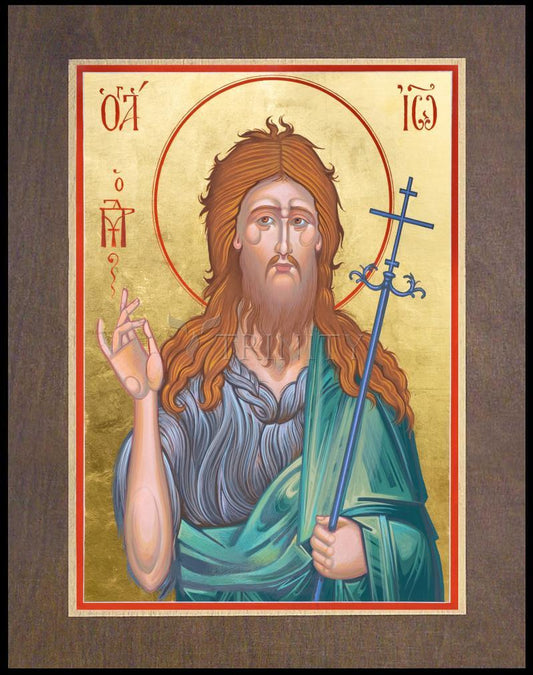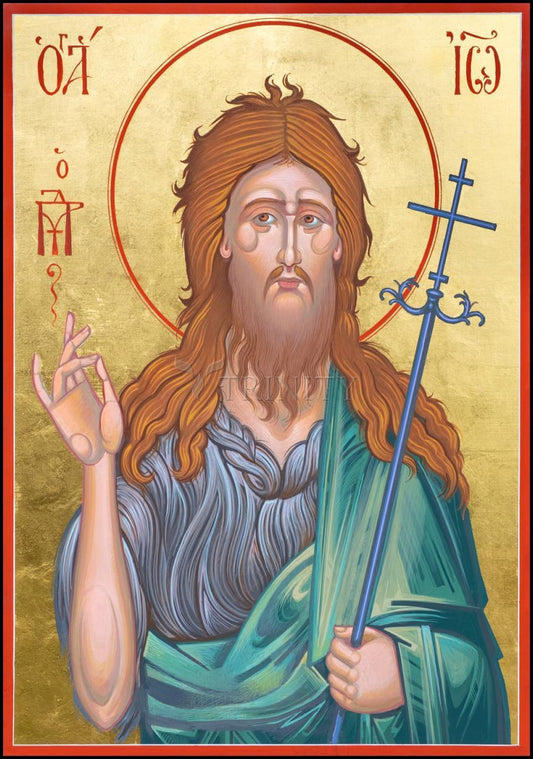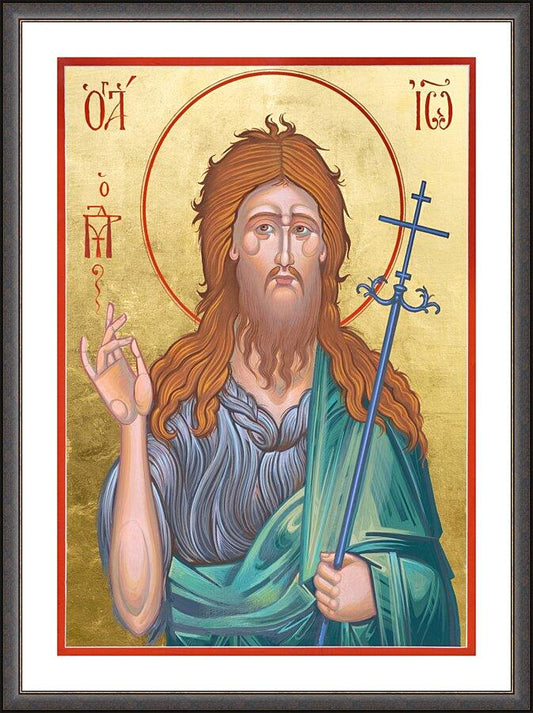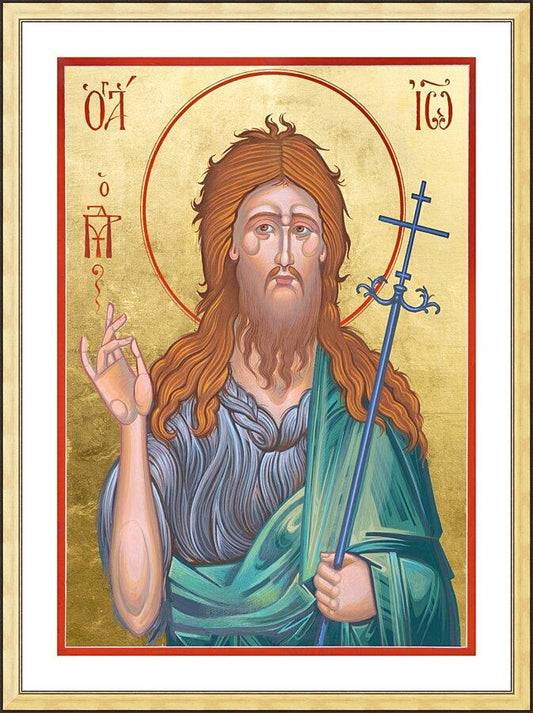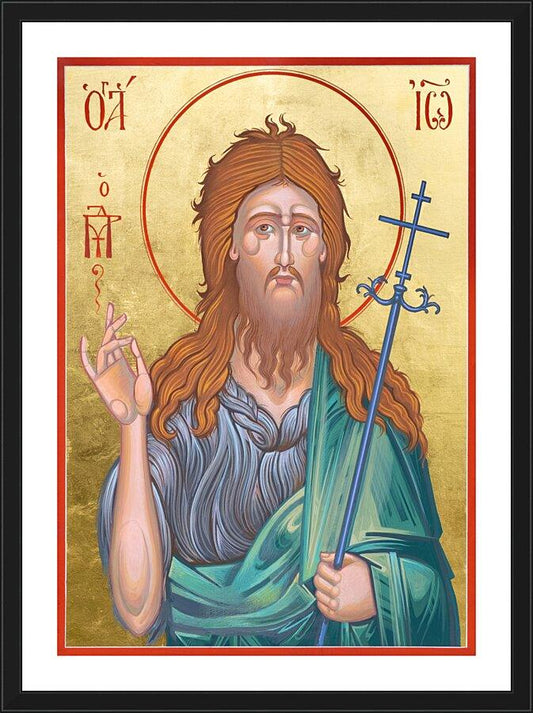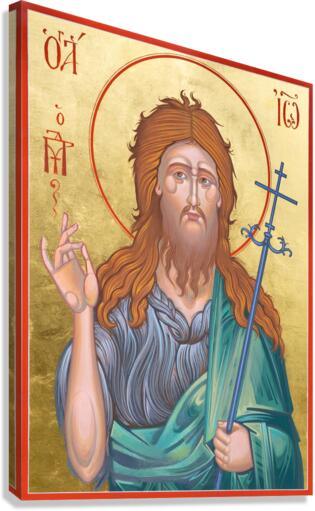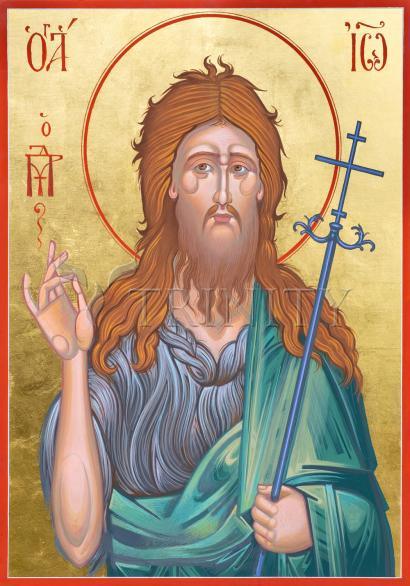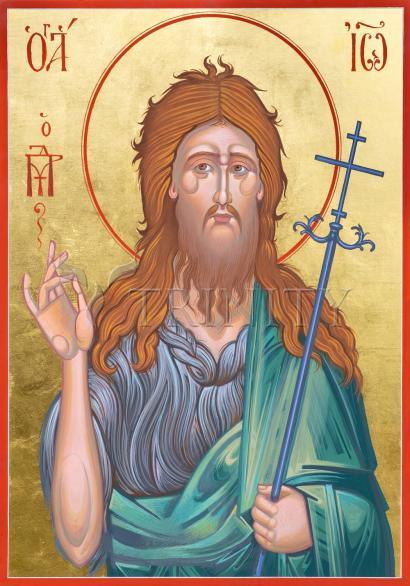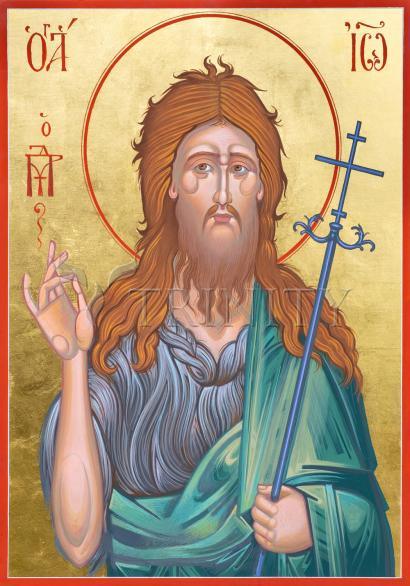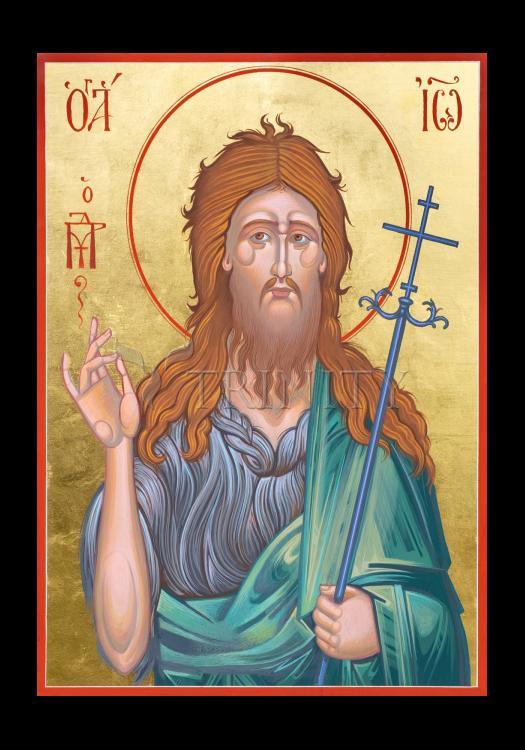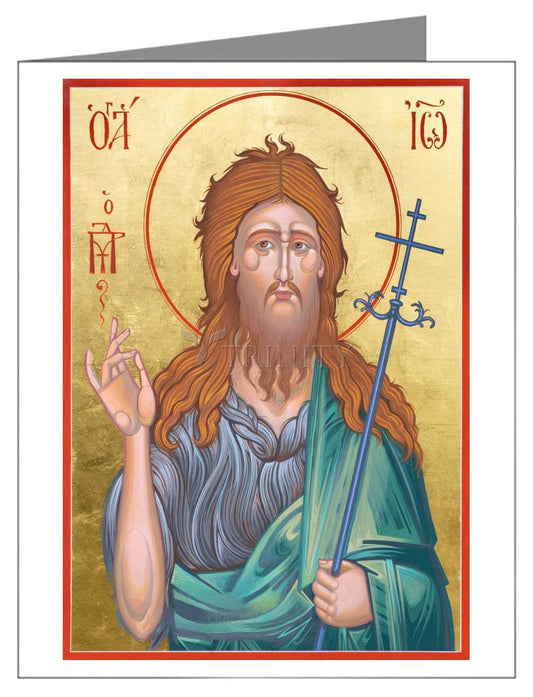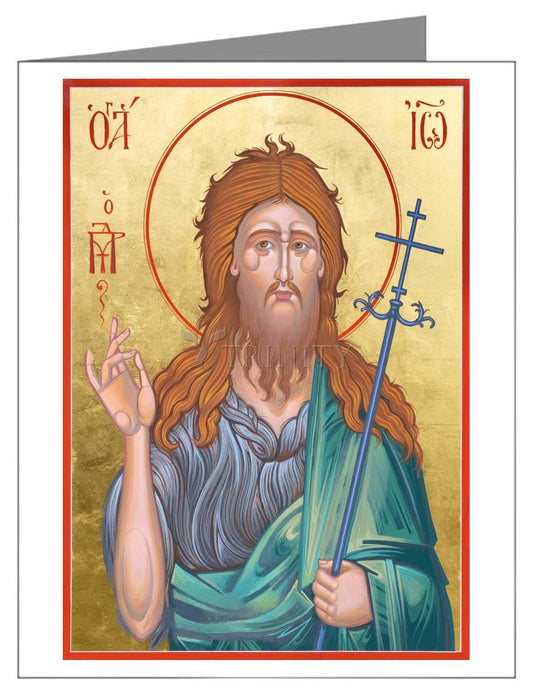ARTIST: Robert Gerwing
ARTWORK NARRATIVE:
John the Baptist Prepares the Way:
The beginning of the good news about Jesus the Messiah, the Son of God, as it is written in Isaiah the prophet:
“I will send my messenger ahead of you, who will prepare your way —a voice of one calling in the wilderness, Prepare the way for the Lord, make straight paths for him.”
And so John the Baptist appeared in the wilderness, preaching a baptism of repentance for the forgiveness of sins. The whole Judean countryside and all the people of Jerusalem went out to him. Confessing their sins, they were baptized by him in the Jordan River. John wore clothing made of camel’s hair, with a leather belt around his waist, and he ate locusts and wild honey. And this was his message: “After me comes the one more powerful than I, the straps of whose sandals I am not worthy to stoop down and untie. I baptize you with water, but he will baptize you with the Holy Spirit.”
(Mark 1: 1-8)
His feast day is June 24.
Read More
St. John the Baptist (4? B.C.-31? A.D.) is important in Christian tradition as the forerunner of the Messiah, Jesus of Nazareth.
The two ancient sources that speak of John are the Gospels and the Antiquities of the Jewish historian Josephus Flavius. John was the son of the priest Zachariah and of Elizabeth, and the cousin of Mary, the mother of Jesus. He was born in Palestinian hill country about 4 B.C. Little is known of his early years. The Gospels state that his birth and name were foretold by God to his father and that his conception was miraculous because his mother, Elizabeth, was beyond childbearing age. He spent his early years "in the desert," according to the Gospel; this phrase is almost a technical term in Qumran literature for the place where the Jewish sectaries lived together near the Dead Sea.
As an adult, John appeared on the banks of the river Jordan sometime during the reign of Herod Antipas (ca. 21 B.C.-A.D. 39). Since Jesus was put to death sometime between A.D. 29 and 31, and since he and John met at the beginning of Jesus' public life, it can be assumed that John started his own public ministry sometime in the mid-20s of the 1st century A.D.
According to the sources, John was a reforming zealot. He preached an imminent catastrophe of divine punishment; he castigated hypocrisy, demanded repentance, and announced the imminent coming of the Messiah. Many of the elements of John's doctrine resemble some teachings of the Qumran sectaries as noted in the Dead Sea Scrolls, particularly his antiestablishment attitude, his insistence on imminent divine punishment for sinners, and his preaching of a kingdom of God that would soon be established. John furthermore insisted that all who repented of their sins should come to him and go through a rite of washing or baptizing; hence he was called the Baptist.



